Staircases are more than just functional parts of your home—they can be stunning features that elevate your interior design. Whether you’re looking to refresh outdated stairs or create a focal point for your home, there are many ways to upgrade a staircase. From simple DIY projects to major renovations, we’ll explore different design options that can transform your home’s interior.
Stairway Spruce-Up
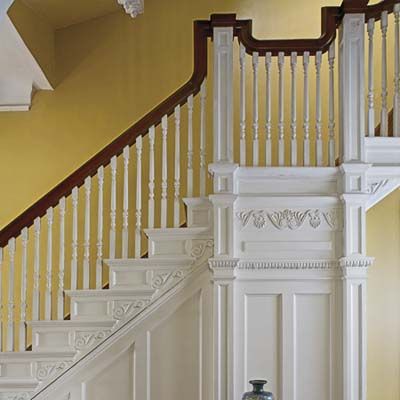
Adding ornate molding is one of the quickest ways to upgrade your staircase. This detail can bring character into your space. Install decorative panels on the risers or add intricate balusters to create a more finished look.
For a modern design, mix traditional molding styles with contemporary finishes or colors to get a unique blend of old and new. Other options include painting the molding in bold colors or adding a stencil pattern. Don’t overlook the handrail—a quick update with fresh stain or paint can completely change the look of your staircase.
Go Salvage Shopping
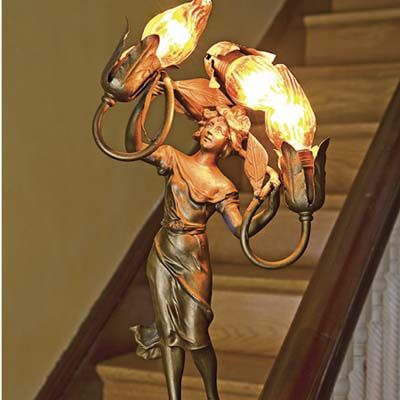
Incorporate salvaged elements into your staircase design to add a touch of history to your home. Antique light fixtures, like the late-19th-century pot-metal find shown in the image above, can serve functional and decorative purposes. When installing these fixtures, make sure you have proper wiring by running it from the basement through the newel post.
You can also use reclaimed wood for treats and risers or salvaged iron railings to bring more historical influence to your interior. Each salvaged piece you choose brings its own charm and story into your space, making it a customized, one-of-a-kind staircase.
Library Landing

Transform the space at the top of your stairs by adding a library nook with built-in bookcases. This adds storage and creates a charming, convenient reading area for book lovers. Install low, surface-mount bookcases along the landing, leaving enough room to pass by it.
For functionality, place one bookcase on casters to allow for easy access to hidden storage areas, such as a crawl space. You can also add a small armchair or built-in bench with plush cushions for more comfort. Soft lighting and a small area rug can turn the average stair landing into a favorite spot in your home.
Tear Out Old Carpet on Your Stairs

Removing old carpet from your stairs can reveal beautiful wood treads underneath. Refinishing these stairs is a great DIY project that can change the look of your staircase. Here’s how to do it:
- Carefully remove the old carpet and padding without damaging the wood underneath.
- Sand the treads to remove any adhesive residue and smooth out imperfections.
- Fill any nail holes or cracks with wood putty.
- Stain the treads to your desired color and finish with clear polyurethane for protection.
- Paint the risers white for a classic look, or get creative with a patterned design.
Additionally, you can add a stair runner. It is a middle-ground option that provides comfort and shows the refinished wood. Stair runners come in many colors and patterns, allowing you to add a personal touch to your staircase.
Under-The-Stairs Storage
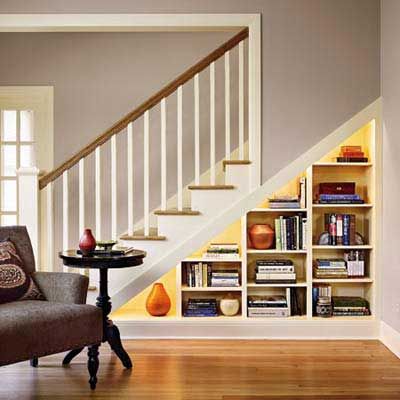
Maximize the often-wasted space beneath your stairs with built-in storage solutions. Lighted shelves can showcase books or items, and closed cabinets can hide less slightly belonging. This use of space is great in smaller homes where more storage is needed.
We suggest adding a mix of open and closed storage to balance design with functionality. You can also create a built-in workspace or mini-bar under the stairs. With the right layout, this tucked-away area can serve many practical purposes in your home.
Save Space With a Spiral Staircase
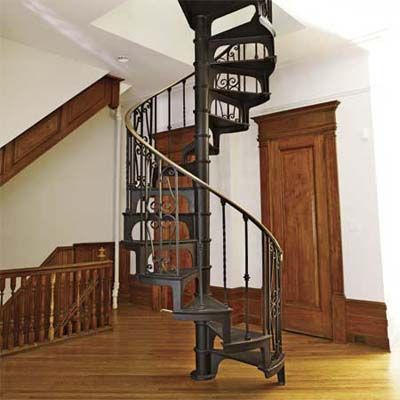
When floor space is limited, a spiral staircase can be a great option for accessing upper floors. These staircases fit neatly into small areas, typically requiring only a five-foot square space. Remember to pair the staircase with matching decoration for a cohesive look. Most importantly, choose designs with sturdy railing and non-slip treads for safety and functionality.
Molding and Millwork
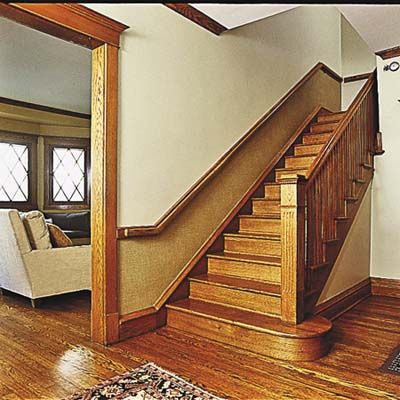
Custom millwork can elevate your staircase across intricate molding, detailed balusters, and crafted handrails. When investing in millwork, choose high-quality materials that will remain durable over time. Collaborate with artisans to achieve a design that matches your home’s style and adds a cultural or historical element to your interior.
Stairway Getaway

Add a window seat to transform awkward under-stairs nooks into cozy spaces. This addition utilizes otherwise unused space and creates a nice spot for reading and relaxation. Incorporate storage under the seat for extra blankets, books, or seasonal items.
For homes with limited square footage, this use of space can be a game-changer. Add soft cushions, throw pillows, and a small side table to make this nook even more inviting. Complement the area with themed decor, aligning with the seasons if desired.
Salvaging Staircases
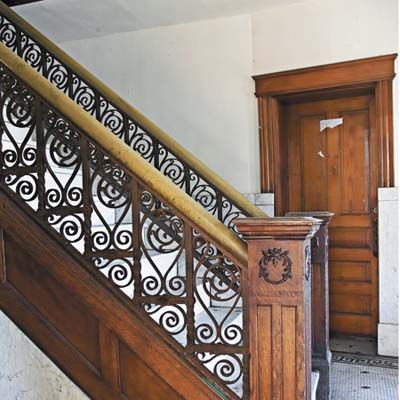
When renovating older homes or buildings, salvage original elements to preserve historical designs. Features like a wrought-iron railing, carved wooden newel posts, and marble wainscoting can be carefully removed and repurposed in new construction or restoration projects.
This approach saves these historical pieces and adds character to modernized spaces. Work with professionals experienced in salvaging and restoring delicate materials so they can be properly integrated into your design.
Oak Railings
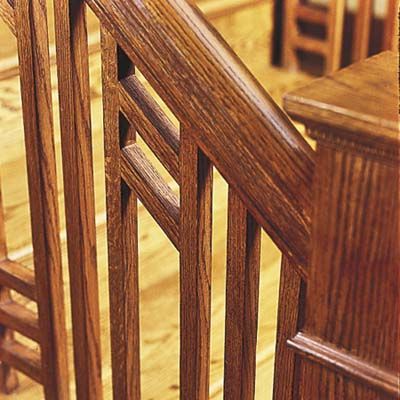
Custom-designed oak railing can be a unique addition to your staircase. Quartersawn oak, known for its beautiful grain patterns, is a great choice for implementing a timeless railing. Oak’s warmth and durability make it ideal for staircases that will be used regularly and extensively.
Lighting Solutions for Staircases
Proper lighting enhances the safety of your staircase. You can install LED strip lights under each step, use wall sconces at intervals, or hang a statement chandelier in a two-story foyer.
Another option is to add motion sensor lighting for energy efficiency. With this installation, the lights will only turn on when someone is using the staircase, making it an eco-friendly option. These lighting solutions have dimmable options, allowing you to adjust the brightness according to your preferences.
Eco-Friendly Staircase Materials
For environmentally aware homeowners, there are many sustainable options for creating a staircase. Bamboo, reclaimed wood, and recycled metals can all create a unique design that matches your home’s interior. Choosing eco-friendly materials contributes to a more sustainable environment while creating a beautiful, unique staircase design.
